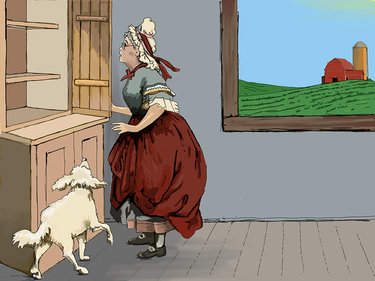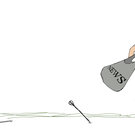What to do when the cupboard is bare
A reader wrote to us recently about a concern that had been heavy on her heart, she said, as she noticed bare shelves at the Hilltown Community Resource Center, which she helps to stock.
She worried it was related to the federal cuts at the United States Department of Agriculture that she’d read about.
Our Hilltown reporter, Noah Zweifel, talked to Jenn Hyde, the executive director of Catholic Charities Tri-County Services, which oversees the resource center, who said that the Northeast Regional Food Bank — which Catholic Charities relies on “a great deal” — did have funding cut by the USDA pull-back, but that it wasn’t having an impact on overall supply.
Hyde also noted an “influx of people turning to us who need food that the food is literally going off the shelves almost faster than we can refill them.”
Everywhere we turn locally, we are hearing concerns about the unreliability of federal funding. It is difficult to know what has been cut, why it has been cut, and when the cuts will take effect here.
We heard it this month at a Guilderland School Board meeting as State Senator Patricia Fahy called talk of federal cuts on everything from Pell grants to the school lunch program “some very serious clouds.”
She said, “This year, it’s like an alternative universe … The rug can be pulled out from under us.” She also said of the state trying to make up for the loss of any federal funds, “We cannot backfill.”
We heard it this month at a Guilderland Town Board meeting as the board conducted a hearing on an updated comprehensive plan that a committee of citizens had labored over for two years.
Many of the plan’s recommendations, Supervisor Peter Barber said, would require both state and federal assistance. “And the way things are happening in Washington these days, that’s never going to happen for four years or 44 months,” he said.
We heard it this month at a meeting of the Guilderland Public Library trustees as the board’s president, Corie Dugas, told the board that the federal Institute of Museum and Library Services has been directed to close up operations or significantly downsize.
Funding, Dugas said, trickles from the federal, to the state, to the regional level and potentially to Guilderland. “It will definitely have an impact on libraries in our system,” she said of the federal cuts.
Earlier at that March 20 meeting, the trustees had supported a resolution, in the wake of federal initiatives, to pledge unwavering dedication to the library’s mission as “a welcoming space for all” and to “bring people together through the power of information.”
Certainly information is critical at a time when federal government websites have removed much of what was once easily accessible — from climate information that farmers need to youth-at-risk information that doctors need.
And certainly wise town planning is essential for our future locally as is the sound and inclusive education of our children.
But perhaps the most essential of all is to be fed. Our students can’t learn on empty stomachs. They cannot grow and prosper without nourishment. Adults suffer, too, the elderly as well as the younger, if they are not able to eat regularly.
As threats have been made by the federal government to cut back on the Supplemental Nutrition Assistance Program, we looked up the figures for our state.
Our heart felt as heavy as our reader had described hers when she saw the empty food-pantry shelves. Fifteen percent of New Yorkers receive SNAP benefits, which support 22 percent of households in our state — that is more than one in five homes.
The average monthly benefit for an individual New Yorker is $209 while the average household benefit is $359.
What is now known as SNAP was originally a federal food stamp program. The program originated in the depths of the Great Depression. Farmers had unmarketable food surpluses while at the same time widespread unemployment caused many to go hungry. The idea was to link the two.
Milo Perkins, the program’s first administrator, said, “We got a picture of a gorge with farm surpluses on one cliff and under-nourished city folks with outstretched hands on the other. We set out to find a way to build a bridge across that chasm.”
A similar link was made in New York state more recently, in the midst of the pandemic. With the supply chain broken, the state created a program, Nourish NY, that got unused farm produce into the hands of hungry people. We wrote on this page in support of the program and we’re pleased it is still going strong.
We also wrote in support of legislation that would require food scraps created by large institutions to be recycled. Not only would this help feed hungry New Yorkers, we wrote in 2021, it would also help curb climate change. The tens of thousands of tons of food scraps that are regularly buried in landfills not only take up space that could be better used for other waste but, as the food decomposes, it creates huge amounts of methane, a greenhouse gas far more potent than carbon dioxide.
We are pleased that the initiative, overseen by the state’s Department of Environmental Conservation, went into effect on Jan. 1, 2022.
Designated food-scrap generators like restaurants, supermarkets, hotels, universities, food processors, prisons, and sports venues that create an annual average of two tons of food scraps or more each week donate their excess food. Scraps that are not usable are recycled in an organics facility.
According to the two annual reports, the program is already making a difference. For example, the most recent report, from 2023, says over 20,000 tons of food were donated by 629 institutions in 2022, a 60 percent increase from 2021.
Nearly half of the solid waste produced globally is organic or biodegradable. The United States is among the worst offenders. Even without a federal program, New York’s program shows states can make a difference.
The state of Vermont in 2012 passed a universal recycling law, similar to our current DEC initiative, barring big waste generators from throwing out uneaten food and, in 2020, expanded the program to cover all residents. Vermont is the first state to require food waste be separated from other trash and waste haulers must provide pick-up service for people who cannot compost at home.
Individual municipalities in New York state, some of them close to home, have adopted programs for residents to have food waste be composted. For decades on this page, we have extolled the virtues of composting, explaining the relatively simple procedure that turns waste into rich fertilizer.
We heard this week from a young entrepreneur, Cody Futia, who said he called us because he liked a recent editorial. He was born and raised in Guilderland, he said, and after graduating from the University at Albany with a degree in business, he quickly realized his first job after graduation wasn’t a fit.
“I can’t sit in a cubicle 9 to 5,” he said. “I’m a giant gardener. I’ve always been in the dirt.”
Futia started making vermiculture with a handful of worms and now has 200,000 worms at work in the garage of his West Old State Road home.
He picks up 1,800 pounds of food waste every week from places too small to be required by the DEC to recycle, pre-composts it to eliminate pathogens, and then lets the worms have at it.
Futia started his business, Vermiluv, 18 months ago and plans eventually to charge fees for pickup so he can pay a driver. He sells the compost and calls it “worm magic.”
“The microscopic fungi are the real rock stars,” he said. “You get better yields, deeper roots, and it’s all natural.” His tomato plants last year, he reports, were taller than he.
“I’ve always had this fire inside of me to make the world better,” said Futia. “This is a way to give back to my community and it makes the planet better.”
Our talk with Futia lifted our spirits. Our heart felt less heavy.
We’ve written on this page since the current administration began its massive cuts of worthwhile government programs of ways that our state and our local municipalities can step up to make a difference.
Talking to Futia made us see the difference an individual can make, too.
“Small actions can yield significant results,....” Futia says on his Vermiluv website. “We’re not just cultivating worms and castings; we’re cultivating a mindset — a belief that every small step towards sustainability is worth it.”
Small actions can, indeed, yield significant results, especially if they are widely undertaken. If our national government is no longer willing to fulfill its role in seeing to the needs of all of its citizens, not just the wealthy ones, we as individuals can step up.
We live in a time and in a nation where the gorge between the poor and the wealthy is getting wider and deeper. And, as Milo Perkins said in the 1930s, we need “to find a way to build a bridge across that chasm.”
We don’t expect many to follow the trail blazed by Pauline Williman of Knox when she decided to use her family’s land to grow food for the needy.
But we wonder, following the mythic tradition of a farmer planting an outer row for travelers to use without asking, if farmers could commit some small portion of their crops to donate to local food pantries or food banks.
In the same way, as the rest of us who can afford to fill our shopping carts push through the lavishly laden supermarket aisles, could we, too, create an outer row, picking up a portion to donate each week?
If this became a habit — with local stores placing collection cartons in front the way many do at Christmas time — we might be able to make a year-round difference in the lives of our neighbors in need.
In these uncertain times, we need to count on one another.


